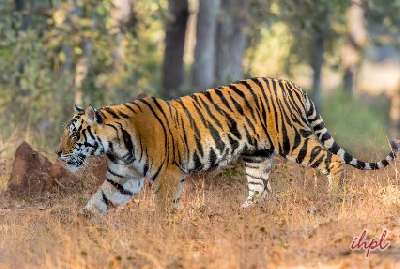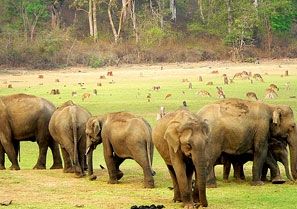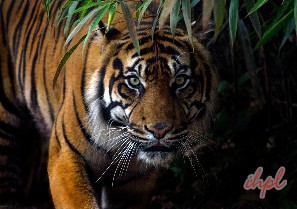“Only when the last of the animal’s horns, tusks, skin and bones have been sold, will mankind realize that money can never buy back our wildlife.” ~ Paul Oxton, Wildlife Photographer and Founder of Wild Heart Wildlife Foundation
The Urgent Need for Wildlife Conservation
The World Wildlife Fund’s 2022 Living Planet Report revealed a devastating 69% decline in wildlife populations since 1970. In India alone, the Ministry of Environment, Forest and Climate Change reports that nearly 12% of mammal species and 15% of bird species face extinction threats. These alarming statistics highlight the critical importance of conservation efforts. Wildlife conservation encompasses the protection of animal species and their natural habitats from threats including habitat destruction, poaching, pollution, and climate change. As Dr. Krithi Karanth, Chief Conservation Scientist at the Centre for Wildlife Studies, explains: “Conservation isn’t just about saving charismatic species—it’s about preserving entire ecosystems that support both wildlife and human wellbeing.”Why Wildlife Conservation Matters
Ecosystem Balance and Biodiversity
All species play vital roles in their ecosystems, forming intricate food webs that maintain ecological stability. According to a 2023 study in the journal Nature Ecology & Evolution, removing even one species can trigger cascading effects throughout the ecosystem. For example, the decline of vultures in India during the 1990s-2000s (due to the veterinary drug diclofenac) led to increases in feral dogs and disease transmission.Climate Regulation and Environmental Protection
Forests and natural habitats act as carbon sinks while regulating water cycles. The Forest Survey of India (2021) reports that Indian forests absorb about 15% of the country’s total CO2 emissions. When these habitats are destroyed, not only do we lose wildlife, but also natural climate mitigation systems that protect against floods, droughts, and soil erosion.Food Security and Agricultural Benefits
Wildlife contributes directly to food security through pollination services. The Indian Council of Agricultural Research estimates that insect pollinators contribute to approximately 35% of India’s agricultural production, valued at ₹20,000 crores annually. Conservation of insects, birds, and bees is therefore essential for sustainable agriculture.Medicinal Resources and Biomedical Research
The pharmaceutical industry relies heavily on natural compounds found in wildlife. According to the Journal of Ethnopharmacology, over 50% of modern medicines originated from natural sources. For instance, the Indian pangolin’s scales contain compounds being studied for potential antimicrobial properties, while cobra venom components are used in medications for hypertension and pain management.Economic Value Through Ecotourism
Wildlife tourism contributes significantly to India’s economy. The Ministry of Tourism reports that wildlife tourism generated approximately ₹12,000 crores in 2019, supporting over 300,000 jobs directly and indirectly. Popular destinations like Jim Corbett National Park receive over 300,000 visitors annually.Cultural Heritage Preservation
Many indigenous communities in India have deep cultural connections to local wildlife. The Bishnoi community of Rajasthan, for instance, has protected blackbucks and khejri trees for over 500 years as part of their cultural traditions. Conservation efforts help preserve these important cultural practices and indigenous knowledge systems.Major Conservation Initiatives in India
India has implemented numerous wildlife protection programs since establishing Jim Corbett National Park in 1936 (India’s first national park). These initiatives demonstrate the country’s commitment to biodiversity conservation.Project Tiger (1973-Present)
Launched by Prime Minister Indira Gandhi with support from WWF, Project Tiger represents one of India’s most successful conservation programs. Achievements:- Tiger population increased from a critical low of 1,827 in 1973 to 3,167 in 2022 (National Tiger Conservation Authority)
- Protected area coverage expanded from 9 reserves (18,278 km²) to 53 reserves (74,749 km²)
- Developed scientific monitoring using camera traps and DNA analysis
- Created buffer zones to reduce human-wildlife conflict
- Habitat fragmentation due to infrastructure development
- Continued poaching pressure driven by illegal wildlife trade
- Human-tiger conflict in densely populated buffer zones
Project Elephant (1992-Present)
This initiative focuses on conserving Asian elephants and their habitats while addressing human-elephant conflict. Achievements:- Stabilized elephant population at approximately 29,964 (2017 elephant census)
- Established 32 elephant reserves covering 65,000 km²
- Developed elephant corridors to facilitate natural migration
- Implemented early warning systems to reduce human-elephant conflict
Crocodile Conservation Project (1975-Present)
This program focuses on three crocodile species: mugger, saltwater crocodile, and gharial. Achievements:- Increased mugger population from near extinction to over 5,000
- Reintroduced 4,000+ alligators and 1,800+ crocodiles to natural habitats
- Established 34 crocodile sanctuaries nationwide
- Developed successful captive breeding protocols
Marine Conservation Initiatives
India’s coastline spans 7,500 km, supporting diverse marine ecosystems requiring protection. Key Programs:- UNDP Sea Turtle Project (protecting Olive Ridley turtles)
- Coastal and Marine Biodiversity Protection Programme
- National Plan for Conservation of Aquatic Ecosystems
Legal Framework for Wildlife Protection
India has developed comprehensive legislation to protect its biodiversity:- Wildlife Protection Act (1972): Prohibits hunting and establishes protected areas
- Forest Conservation Act (1980): Restricts forest land conversion
- Biological Diversity Act (2002): Regulates access to biological resources
- Environmental Protection Act (1986): Provides framework for pollution control
- Scheduled Tribes and Forest Dwellers Act (2006): Recognizes traditional forest rights
Current Challenges and Future Directions
Despite progress, Indian wildlife faces growing threats requiring innovative solutions.Habitat Fragmentation and Loss
India’s rapid development has fragmented wildlife habitats. The Wildlife Institute of India estimates that 26 out of 88 elephant corridors are highly compromised due to infrastructure projects. Emerging Solutions:- Wildlife crossing structures (underpasses/overpasses) on highways
- Community-managed conservation reserves in buffer zones
- Habitat restoration through native species reforestation
Human-Wildlife Conflict
As wildlife populations recover and human settlements expand, conflicts increase. According to Ministry data, wildlife conflicts cause approximately 500 human deaths annually and significant crop damage. Innovative Approaches:- Early warning systems using AI and mobile technology
- Beehive fences to deter elephants (95% success rate in pilot projects)
- Community-based compensation schemes with faster processing
- Alternative livelihood development in buffer zones
Climate Change Impacts
Rising temperatures and changing rainfall patterns threaten wildlife habitats. The Indian Institute of Science projects that 30% of India’s western ghats species may face range shifts or extinctions by 2050. Adaptation Strategies:- Climate-resilient protected area networks
- Assisted migration for vulnerable species
- Expanded high-altitude habitats for species affected by warming
Wildlife Crime and Poaching
Despite strengthened enforcement, the illegal wildlife trade remains a serious threat. The Wildlife Crime Control Bureau reports over 20,000 wildlife crime cases annually. New Enforcement Methods:- DNA forensics for wildlife product identification
- Community informant networks with anonymous reporting
- Specialized wildlife crime prosecution units
- International cooperation through INTERPOL’s Wildlife Crime Working Group
How You Can Contribute to Wildlife Conservation
Individuals can make meaningful contributions to conservation efforts:- Support Conservation Organizations
- Wildlife Trust of India, WWF-India, and Wildlife Conservation Society India run evidence-based projects needing public support.
- Responsible Tourism
- Visit national parks that follow sustainable practices
- Maintain appropriate distances from wildlife
- Support local communities around protected areas
- Reduce Your Environmental Footprint
- Choose sustainably sourced products
- Minimize single-use plastics that often end up in wildlife habitats
- Consider plant-based meals several times weekly (reducing pressure on habitats)
- Citizen Science Participation
- Join initiatives like Bird Count India or the Indian Biodiversity Portal
- Report wildlife sightings through mobile apps like Wildlife Sightings
- Participate in local habitat restoration projects
- Advocate for Conservation Policies
- Support environmental impact assessments for development projects
- Engage with local representatives on wildlife protection issues
- Share verified information about conservation challenges












